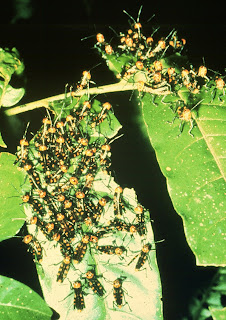Chemical engineering is an integrative engineering discipline that ranges from the typical oil refinery industry to the recently rising pharmaceutical research, not to mention the food design industry as well! Contrary to the common belief, chemical engineers not only focus on the chemical aspect of production, but they also apply extensive math and physics into process/reactor designs.
 Q: What real world applications does chemical engineering have?
Q: What real world applications does chemical engineering have? Chemical engineering is well known for its flexibility. High demands for chemical engineers have ramified to many areas of marketing and production such as pharmaceuticals, high performance materials in the aerospace and automotive industries, semiconductors in the electronics industry, paints and plastics, petroleum refining, synthetic fibers, artificial organs, bio-compatible implants and prosthetics. Nowadays, chemical engineers are marching into the newly developing chemical sensors targeted for drug delivery, exciting environmental technologies, and the puzzling yet intriguing area of nanomaterials.
Q: What sort of classes do you take while studying chemical engineering?
The typical chemical engineering curriculum consists of heavy loads of advanced math and physics. Courses like fluid mechanics, heat and mass transfer, etc make up the gist of chemical engineering applications.
Q: What are typical career path taken after graduating with a degree in chemical engineering?
Q: What are typical career path taken after graduating with a degree in chemical engineering?
Although more than half of the chemical engineering graduates go on working for engineering firms, their options are not limited to pure engineering. In fact, the break down for rest can usually be categorized into graduate school, professional schools (include med and business schools), and other non-engineering related fields such as finance and marketing.
Despite where chemical engineering students might end up, the incredible skills that they have developed from the four years of rigorous training will enable them to outshine the others in any place, any discipline. Who knows, you might even end up working for Nabisco, coming up with their next hit cookie!
Despite where chemical engineering students might end up, the incredible skills that they have developed from the four years of rigorous training will enable them to outshine the others in any place, any discipline. Who knows, you might even end up working for Nabisco, coming up with their next hit cookie!








